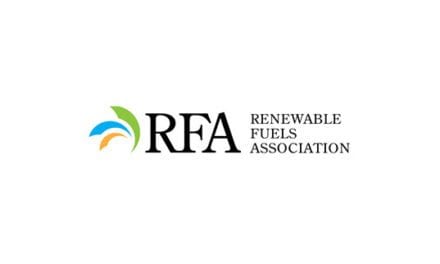Crude Oil Makes a New Low and Bounces
- WTI falls. $26.05 is a 13-year low
- Record crude oil speculative open interest
- Record inventories frustrates bulls and bears
- Next-winter ULSD near seasonal low price
- Natural gas remains under price pressure
Sincerely, Alan Levine Chairman, Powerhouse
 Table covers crude oil and principal products. Other products, including residual fuel oil and “other oils” are not shown, and changes in the stocks of these products are reflected in “Total Petroleum Products.” Statistics Source: Energy Information Administration “Weekly Petroleum Status Report” available at www.eia.doe.gov
Table covers crude oil and principal products. Other products, including residual fuel oil and “other oils” are not shown, and changes in the stocks of these products are reflected in “Total Petroleum Products.” Statistics Source: Energy Information Administration “Weekly Petroleum Status Report” available at www.eia.doe.gov
The Matrix
As prices reached new lows in the now-twenty-month collapse of the petroleum markets, the CFTC reported a half-million speculative crude oil positions. This is reportedly the highest level ever seen for the speculative trading crowd. Short positions neared their all-time high in the most recent report, adding around ten per cent for the bears. Long positions moved to their highest point since last summer. This does not provide an indication of directionality but the massive number of speculative positions indicates the intensity with which traders are watching events unfold in the crude oil market. It also suggests that a definitive price move could be very dynamic with short covering or long liquidation driving price. Growth of oil supplies and softening global demand frustrates the price bulls. And the reluctance of distillate fuel oil to revisit the January 21st lows at $0.8487 does the same for the bears. An announced production control agreement between Saudi Arabia and Russia has not gotten the lift some bulls might have expected. The agreement held output to January levels — already high. It does not include any agreement from Iran. Moreover, it does not recognize the importance of the United States’ more than 500 million barrels of crude oil — now able to be exported — in the balance. Stocks of American distillate fuel oil are challenging the upper limit of the five year range. Nonetheless it is important to remember that February is typically the best time to buy distillate fuel oil futures for the following winter.
At writing, the winter 2016-17 strip (November through March) is worth about $1.26. This is a carry of nearly twenty cents against the spot March future. This is slightly tighter than it was three months ago, an early indication of a bottom forming.
The International Energy Agency remains firmly in the camp of lower for longer. The Agency has conceded that a deal on cutting production is unlikely. And even if U.S. output falls, its decline will take time. IEA has also cut its forecast for 2016 demand gains. It expects demand to grow at 1.17 million barrels daily, a 27 per cent decline from 1.6 million barrels per day growth in 2015—a five year high.
Stocks of American distillate fuel oil are challenging the upper limit of the five year range. Nonetheless it is important to remember that February is typically the best time to buy distillate fuel oil futures for the following winter.
At writing, the winter 2016-17 strip (November through March) is worth about $1.26. This is a carry of nearly twenty cents against the spot March future. This is slightly tighter than it was three months ago, an early indication of a bottom forming.
The International Energy Agency remains firmly in the camp of lower for longer. The Agency has conceded that a deal on cutting production is unlikely. And even if U.S. output falls, its decline will take time. IEA has also cut its forecast for 2016 demand gains. It expects demand to grow at 1.17 million barrels daily, a 27 per cent decline from 1.6 million barrels per day growth in 2015—a five year high.
Supply/Demand Balances
Supply/demand data in the United States for the week ending February 5, 2016 were released by the Energy Information Administration. Total commercial stocks of petroleum increased 0.3 million net barrels during the week ending February 5, 2016. Builds were reported in stocks of RBOB, fuel ethanol, distillates, residual, and other oils. Draws were reported in stocks of K-jet fuel, and propane. Crude oil supplies in the United States decreased to 502.0 million barrels, a draw of 0.8 million barrels. Crude oil supplies increased in two of the five PAD Districts. PADD 1 (East Coast) crude oil stocks increased 0.1 million barrels and PADD 2 (Midwest) stocks grew 1.6 million barrels. PADD 3 (Gulf Coast) crude oil stocks decreased 1.3 million barrels, PADD 4 stocks fell 0.5 million barrels, and PADD 5 (West Coast) stock decreased 0.7 million barrels. Cushing, Oklahoma inventories increased 0.5 million barrels to 64.7 million barrels. This is an all-time high for Cushing, government data show. Domestic crude oil production decreased 28,000 barrels daily to 9.186 million barrels per day. Crude oil imports averaged 7.124 million barrels per day, a daily decrease of 1.132 million barrels. Refineries used 86.1 per cent of capacity, a decrease of 0.5 percentage points from the previous report week. Crude oil inputs to refineries decreased 105,000 barrels daily; there were 15.510 million barrels per day of crude oil run to facilities. Gross inputs, which include blending stocks, fell 58,000 barrels to 15.643 million barrels daily. Total petroleum product inventories saw an increase of 1.1 million barrels from the previous report week. Gasoline stocks increased 1.3 million barrels; total stocks are 255.7 million barrels. Demand for gasoline increased 781,000 barrels per day to 9.122 million barrels daily. Total product demand decreased 134,000 barrels daily to 19.022 million barrels per day. Distillate fuel oil supply increased 1.3 million barrels. National distillate demand was reported at 3.162 million barrels per day during the report week. This was a weekly decrease of 362,000 barrels daily. Propane stocks decreased 3.3 million barrels to 74.8. million barrels. Current demand is estimated at 1.556 million barrels per day, a decrease of 312,000 barrels daily from the previous report week.Natural Gas
According to the EIA: Net withdrawals from storage are below the five-year average and last year’s withdrawals. The net withdrawal from storage for the week ending February 5, was 70 Bcf compared with 153 Bcf a year-ago. The five-year (2010-15) average for the same week was 168 Bcf. This week’s net withdrawal ended a five-week streak of triple-digit storage draws. Low prices for natural gas have not been enough to stem the growth in production. Since the beginning of the year, output from the Northeast exceeded the comparable period in 2015 by eighteen per cent. This reflects gains in the Marcellus and Utica shales. Improvements in northeast pipelining contributed to the growth of output. Notable among these was reversal of the Rockies Express Pipeline (REX.) JREX can move natural gas between Ohio and Indiana in either direction. Texas Eastern Transmission’s OPEN has added 550 Mmcf/d of capacity westbound from Ohio. Weakness continues to be the price pattern for natural gas. Downside objectives below $1.50 are now being seen on Elliott Wave charts. Nonetheless, enough support has emerged to suggest that prices may be establishing a base. Futures trading involves significant risk and is not suitable for everyone. Transactions in securities futures, commodity and index futures and options on future markets carry a high degree of risk. The amount of initial margin is small relative to the value of the futures contract, meaning that transactions are heavily “leveraged”. A relatively small market movement will have a proportionately larger impact on the funds you have deposited or will have to deposit: this may work against you as well as for you. You may sustain a total loss of initial margin funds and any additional funds deposited with the clearing firm to maintain your position. If the market moves against your position or margin levels are increased, you may be called upon to pay substantial additional funds on short notice to maintain your position. If you fail to comply with a request for additional funds within the time prescribed, your position may be liquidated at a loss and you will be liable for any resulting deficit. Past performance may not be indicative of future results. This is not an offer to invest in any investment program.Powerhouse is a registered affiliate of Coquest, Inc.
Was this memo helpful? We’d like your feedback.
Please respond to [email protected]
or call: 202 333-5380









